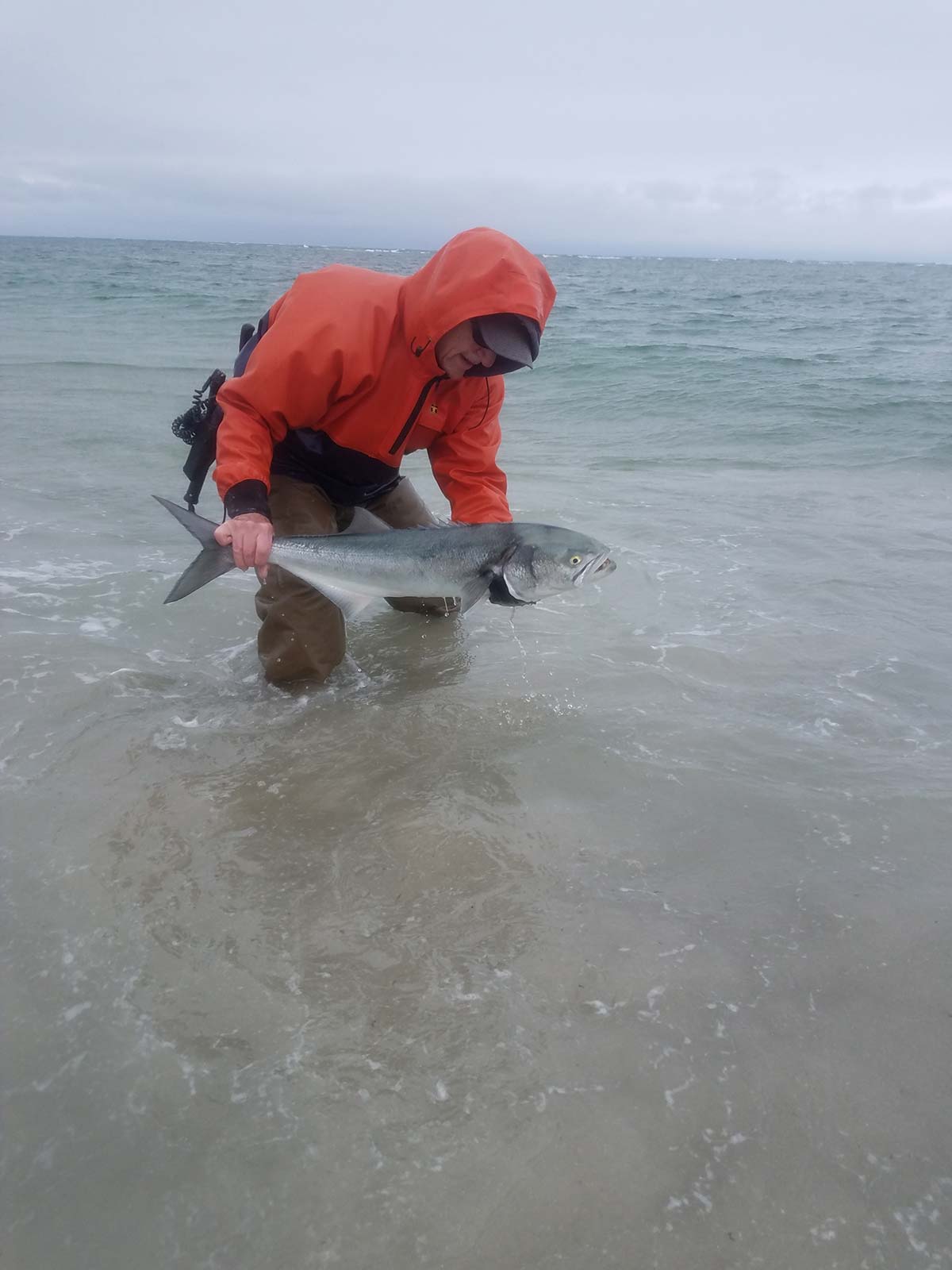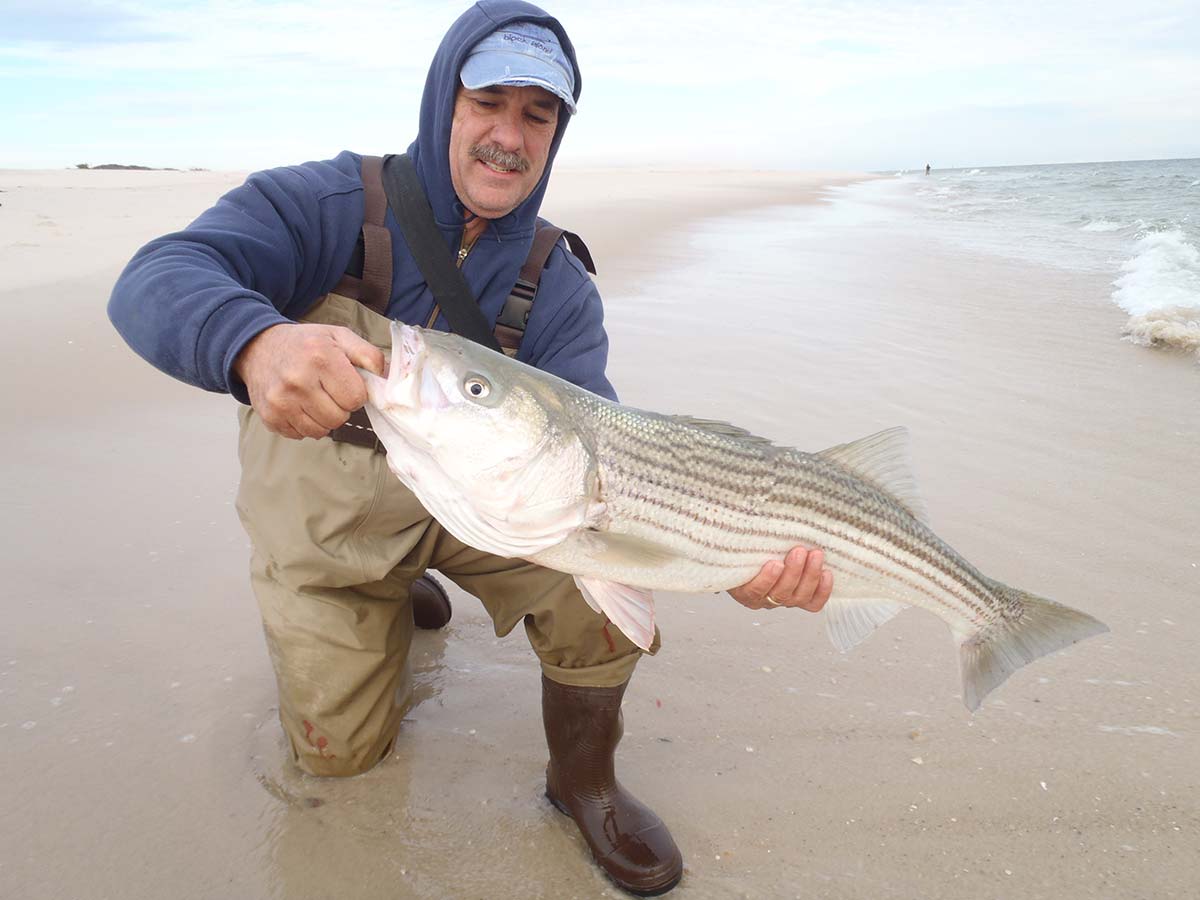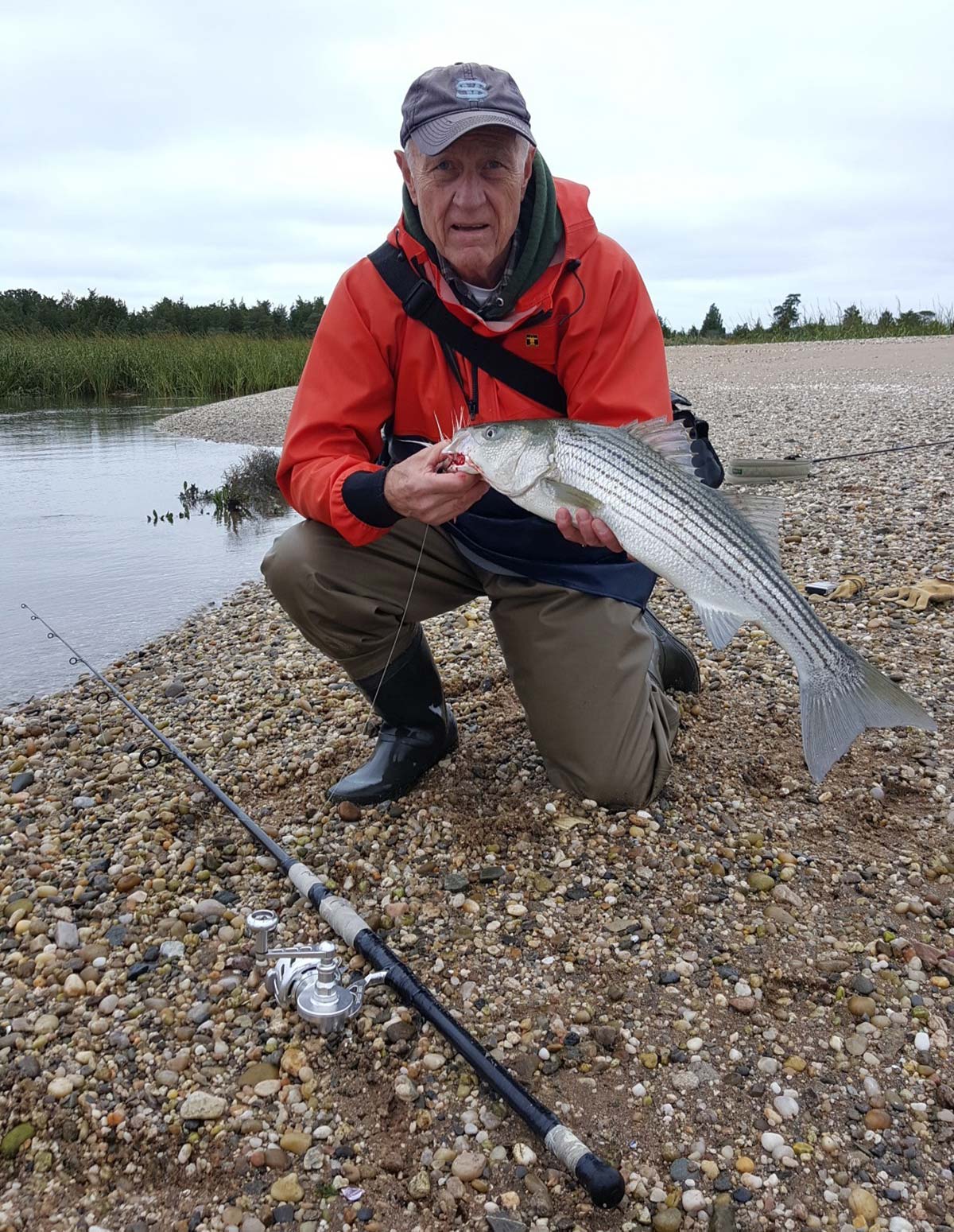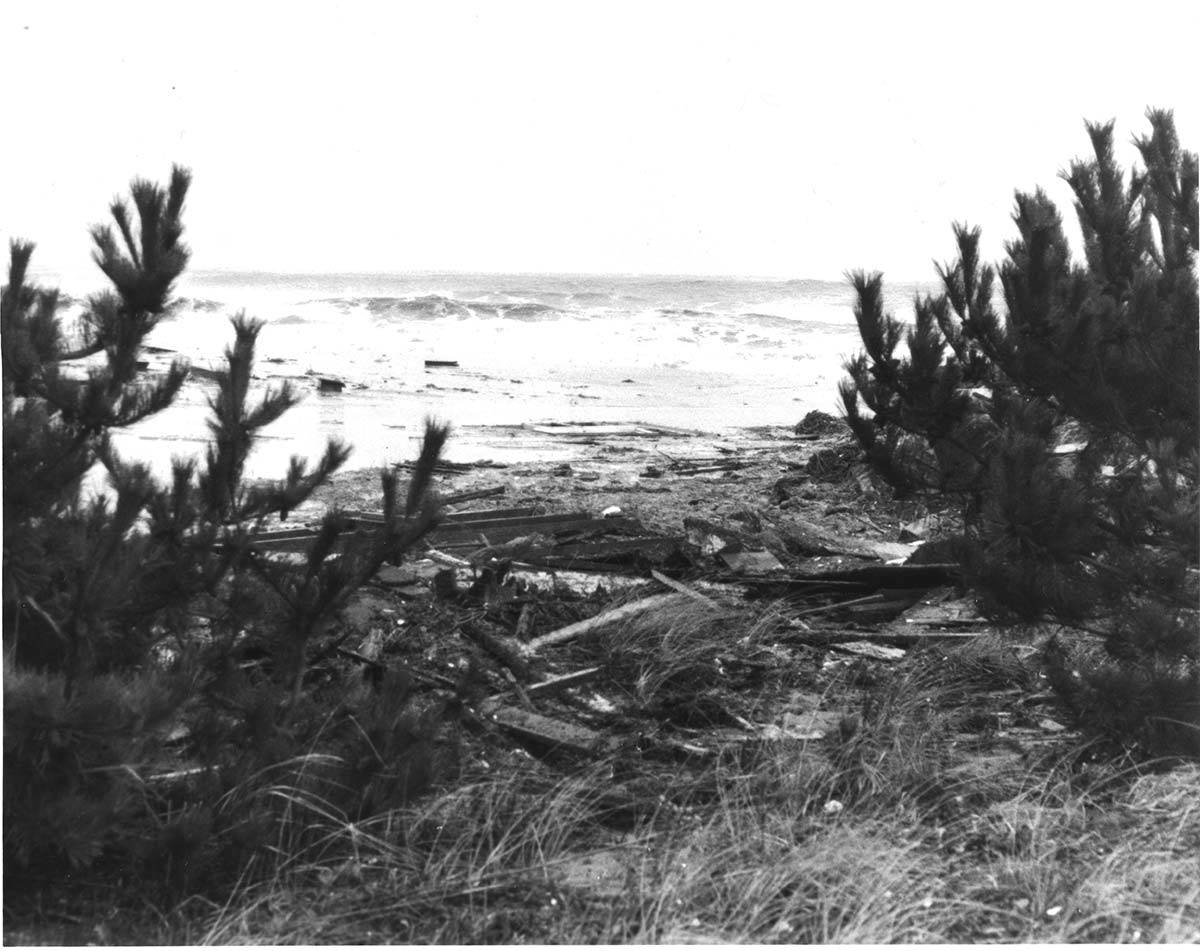A look at changing beach access on Long Island.
Access has been lost in fits and starts and has also dribbled away. But we have gained some access, too. The Fishing Advisory Board has secured new access at State Parks. Other organizations, such as LIBBA, have worked with authorities such as Suffolk County to ensure improved access. The reasons for access loss are many, including a considerable growth in Long Island’s population, new housing, commercial construction, new roads, resident township permit requirements, etc.
The 1970s

I was fresh out of graduate school in 1973 and getting back into surf fishing, I didn’t own a 4-wheel drive vehicle, and I was a South Shore greenhorn. John Fritz did own a 4-wheel drive vehicle, and he sometimes took me fishing with him on South Shore beaches. We could get on the beach at the Sore Thumb and drive west for miles in those days. Today that’s not possible, and some boundaries prevent all access. Today, if you get on at the Thumb, you must stop at the first sign indicating you can go no further with your state park permit because they are Babylon Beaches. Back then, we drove west past Overlook and Cedar Beach to Gilgo, to west Gilgo, and didn’t need to stop until we reached Tobay. That’s a lot of beach sand! Today, you can get on at Gilgo but can only go east for about 3/4 of a mile and cannot go west.
Back then, on the North Shore, I fished Gold Coast shores without interference. If one resident granted access to me, I could walk from harbor to harbor. I also fished all over Little Neck Bay without restrictions. Sometimes it seemed as if I could access the entire North Shore of Nassau County.
The North Fork too, was my oyster. There were no parking issues, nowhere near as many houses, and no one cared where you got on or how far you walked in pursuit of fish. Some North Fork beaches also allowed 4WD access to residents. As Archie Bunker sang so wistfully, “Those were the days!”
Look In The Mirror
It wasn’t just roads, buildings, homes, and eminent domain that reduced access; it was people too. Population growth meant more surf rats and more residents watching. Then, with a huge bluefish population and the big-time return of striped bass in the 90s, more and more anglers were recruited into the surf, while improvements in tackle and the sudden appearance of factory-made SUVs made fishing easier.
Manufactured SUVs with automatic transmissions fanned the flames of growth that led to more scrutiny of 4WDs. Four-wheel drive anglers were now in the crosshairs of public officials responding to many complaints from throngs of new beachfront residents. The final coup-de-grâce occurred when some surf anglers developed a sense of entitlement they had no right to. More and more incidents occurred where anglers argued with residents, set up camp on front lawns, crossed through back yards, and littered along private roads, driveways, and lawns. Residents complained, and restrictions went into place. Access roads were chained off, tickets were issued by the bushel, and little by little, access points vanished. Recently, the Covid-19 pandemic provided villages and towns with the excuse they were looking for to keep anglers off beaches and parking lots. Almost every township did this, and perhaps Southold Township was the most extreme. There are only a few little spots left where you can still gain access without a permit.

Access Push Back
As access dwindled, existing organizations such as LIBBA and a new organization called The Fishing Advisory Board (1978) went into action. Their access goals were twofold. First, secure as much remaining access as possible, and second, attempt to secure new access to replace what was lost. LIBBA has influence with State Parks but also Suffolk County and some townships. The Fishing Advisory Board to State Parks, as the name implies, works only with State Parks, and the FAB also helps the parks in a variety of other ways, including contests, erosion prevention, funding for fishing-related projects, protection of piping plovers, etc. These organizations are still protecting your access today.
Erosion

Another elephant in the room is beach erosion—a problem that was all but non-existent in the 60s and 70s. There are more nor’easters nowadays, and they last longer. The ocean is also creeping higher, and it is getting more and more expensive to support beach replenishment. In today’s reality, it seems that every large storm restricts or bans beach access for 4WD vehicles and walkers for safety reasons. We never concerned ourselves with these closures in the 60s, 70s, and even into the 80s. How about this food for thought? We fished the Cedar Bar the night before Hurricane Gloria and the day after, too.
The North Shore beaches have not been immune to storm damage since the late 1970s. Blizzard Larry (January 1977) got the erosion ball rolling with a three-day storm that featured hurricane-force winds and up to 36 inches of snow that destroyed Caumsett and Sunken Meadow beaches. Then, the Halloween Storm and Hurricane Gloria in the 1980s accelerated the rate of erosion. Perhaps the storm that had the most significant effect on both shores was the 1992 December storm that pumped very high winds onto both Long Island shores for most of a week. Waves as high as 20 feet banged against South Shore beaches, ripped away houses and sand, and destroyed parking lots and parks. Homes and the accouterments of life drifted from Dune Road to Robert Moses State Park.
I covered the aftermath of that storm with my camera and took rolls of black and white film depicting the devastation. While filming a pile of debris at the RM 2, I will never forget that I spotted a child’s doll in the rubble. It seemed so helpless, lying there with its arms spread across the remnants of other people’s lives. It was then that I felt the true tragedy of that storm. Yes, the loss of houses and property, as well as miles and miles of sand dunes was tragic, but for many, the loss of a way of life became irreplaceable in a blink of an eye.
New Access In A Changing Tide
As bleak and depressing as the above might seem, the hard work of many people has retained old and also secured new access. I’m a member of the FAB so let me focus on what we’ve protected over the decades, as well as new opportunities secured.
For example, shortly after the FAB was formed (1978), $500,000 in vandalism at RM led Regional Director John Sheridan to inform the FAB that he was closing the park at night. We asked him to wait for a week and developed a plan that saved $500,000 and cost only $82,000. A few years later, Sheridan wanted to close Democrat Point permanently because of drug activities at night. Obviously, Demo is still open today—both night and day. With the cooperation of Long Island State Parks, we secured off-season parking in RM fields 3 and 4, secured a boat launch ramp at Captree State Park, Camp Hero access at Montauk, built fish cleaning stations, access to Green Island, 4WD access to the jetty west of the Coast Guard Station at Jones Beach, new access as Orient Point State Park and Hallock Landing, protected access to Caumsett and Wildwood, funded road repair access to North Bar, purchased ATVs for increased patrols on beaches for better enforcement through The Fisherman’s Fund, etc. All is not bleak.

In The End
In addition to expanding civilization on Long Island, more people are retired, and others have longer vacations. This means that over recent decades there have been more and more people engaging in more and more diverse recreational activities. Thus, fishermen must share the access. Some activities have grown exponentially since the 60s on Long Island, such as surfing.
Fishing access isn’t likely to expand much in the future. The same pressures mentioned above continue to grow. It is possible that access in front of private property could disappear, townships might limit access to town residents. It is also possible that county and federal access will either be eliminated or narrowly defined by days of use or the number of permits to become a problem for dedicated surf anglers. How can permits be limited and not prevent dedicated surf rats permits? FAB and LIBBA are dedicated to not imposing limits on the number of permits for large parks and areas, but the pressure will mount. The better way to reduce the number of permits is by a plan that prevents those who do not use the permit legally from securing one, evicting those without permits, and confiscating permits for cause on-site when discovered. However, this is tricky because permits cannot be denied if the applicant meets the requirements. The fact is, we live in an age of entitlement where too many people believe they are entitled to do anything they want. So, they cheat. They secure permits under false pretenses, use them unlawfully, and the fact that they circumvent regulation pushes back on anglers. This reality will render LIBBA and the FAB even more critical than today and make State Park access for fishing precious commodities.

Then And Now
You bet we’ve lost access since the 50s, but we’ve expanded and secured access too. Things can never remain the same as population and civilization grow. Some hold onto the idea that things don’t have to change, but they don’t live in any real-world I know about. Yes, when I returned to the surf in the 70s, access was everywhere, and there was only a smattering of anglers on beaches when the fall run began in September. Then, when hunting season opened, that number dwindled to a precious few. In fact, so few that most Long Island residents didn’t even know anglers were fishing because almost no one walked the beaches after Labor Day. Other activities and groups that exist today either didn’t exist or were so small they had little impact. But, today is different from back then. The best possible future can only be secured if anglers support the groups that fight for us so we can protect access and maybe pick up a little more.




